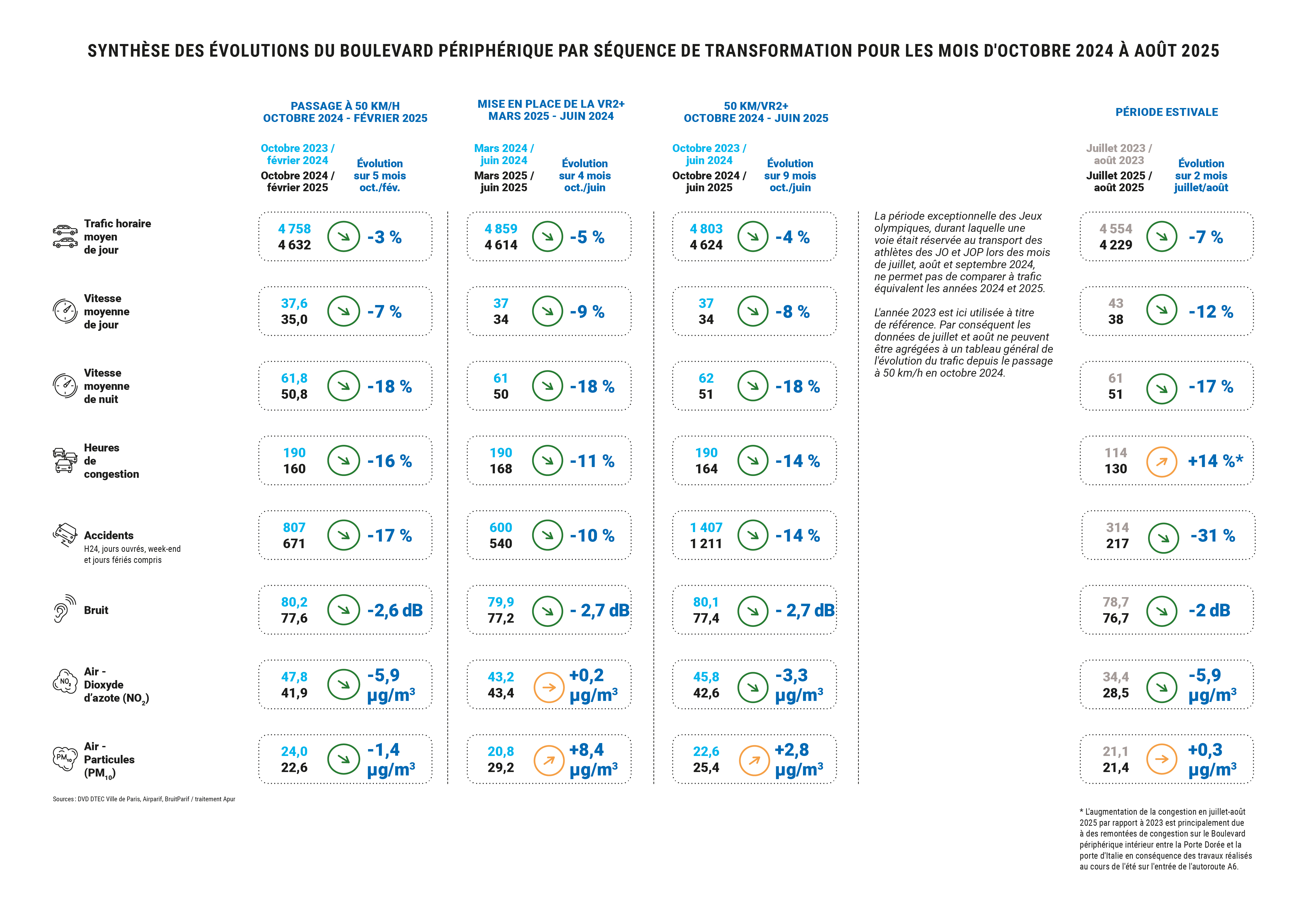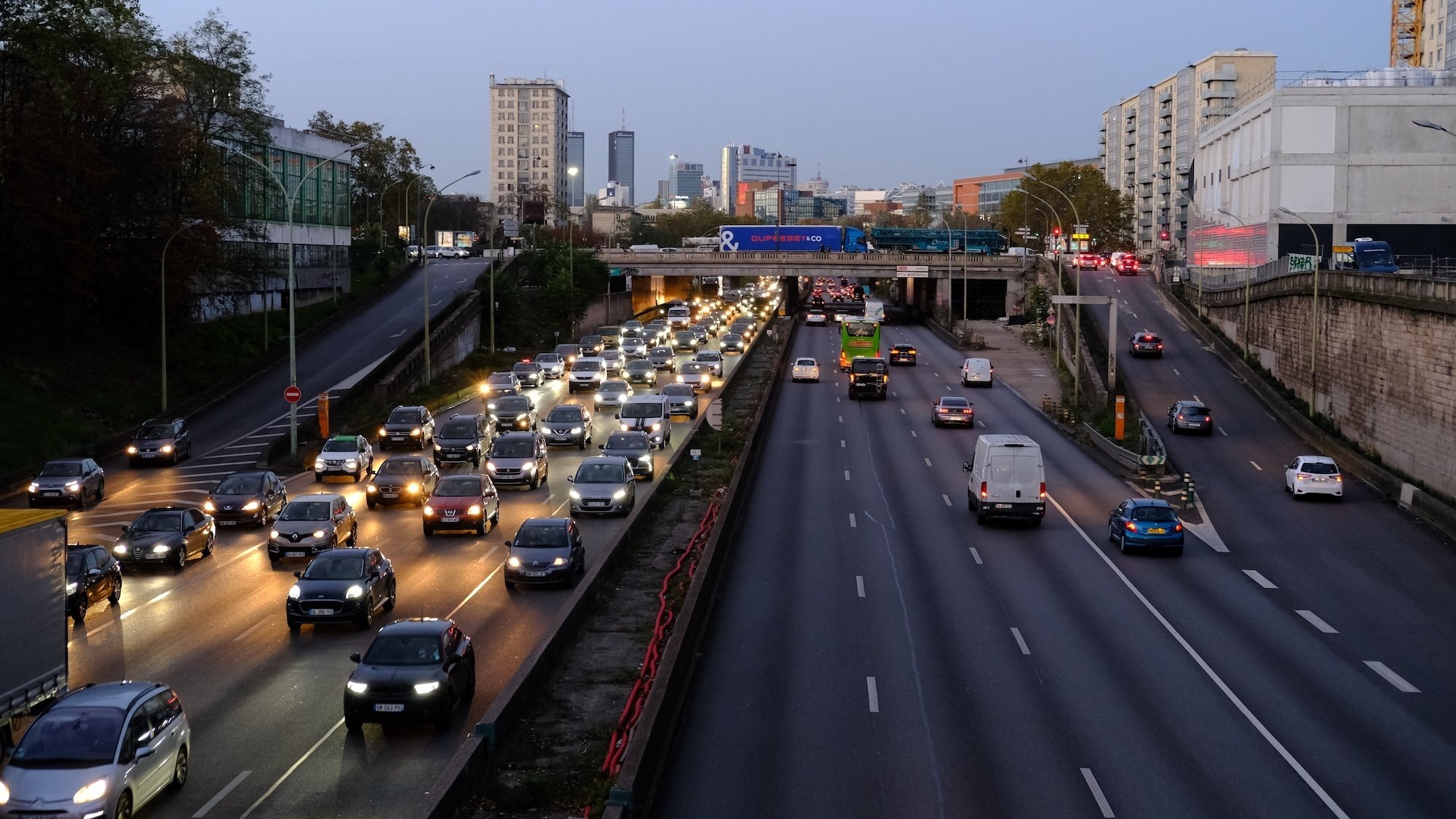Since October 1, 2024, driving at 70 km/h on the périphérique is a thing of the past. From now on, it's a maximum of 50 km/h. This measure was decided by the Paris city hall, with a clear goal: to reduce noise pollution for the approximately 600,000 residents living near this road.
Twelve months later, the Apur (Paris Urban Planning Workshop) publishes a study to evaluate the effects of this change. And the first finding is clear: it's starting to pay off.
Less noise at night, a bit more flow during the day
On average, the noise level has dropped by 2.7 decibels between October 2024 and June 2025, which is equivalent to removing a third of the...
traffic », according to the noise monitoring group Bruitparif. Not insignificant, especially at night…
.
Traffic seems to be flowing a bit more smoother. The study notes a 14% decrease in traffic jams, as well as a similar drop in accidents. The famous « accordion » effect appears to be less noticeable, explains the Institut Paris Région, which also publishes its own follow-up.
However, the noise level remains above the recommended thresholds
Despite these initial effects, we're not quite there yet. For good reason, the website Bruitparif warns: « 13,000 residents remain in critical condition ». In simple terms, they are exposed to noise levels above the standards, particularly those set by the WHO.
To go further, the Île-de-France region, which is against speed reductions, proposes to fund noise-reducing surfaces, a coating that decreases noise but whose effectiveness diminishes over time. « The...half of the ring road is already equipped » reminds Apur, which emphasizes the sustainability of the speed reduction, compared to the technical solution alone.
A controversial measure, especially from the user side
On the taxi side, there's not much enthusiasm. It's an understatement to say that the limit of 50 km/h, especially at night, is far from unanimous. Driving is considered more restrictive, with a jerky rhythm and constantly keeping an eye on the speedometer to avoid speeding fines. Many believe this new constraint makes trips more tiring, without necessarily improving traffic conditions.
It's a similar story from the region's side, where Valérie Pécresse criticizes it as an “antisocial measure” that would cost users “20,000 hours a day”.
🔴 Thread : Interpellée sur le périphérique, @vpecresse réagit et réaffirme son opposition à la fermeture d’une voie et de l’abaissement de la vitesse max à 50km/h
— Ile-de-France Rassemblée (@IDF_Rassemblee) May 29, 2024
🧵 À défiler ⬇️ pic.twitter.com/u78fgr85yd
During the day, many note that the speed limit doesn’t change much. The traffic is often so dense that we rarely go over 50 km/h anyway. But at night, the constraint is more noticeable.
And what about the environment in all this?
On the pollution front, the data is generally positive, although mixed. Fine particles (PM10) have slightly increased, partly due to drier weather. However, nitrogen dioxide has decreased by 3.3 µg/m³, notably thanks to a general decline in vehicle ownership in the metropolitan area.
And on this 1st of October, a new study from Airparif further supports this picture: ...
>One year after the speed limit was lowered to 50 km/h, nitrogen dioxide has dropped by 6%, directly linked to a 4% reduction in traffic. There’s a «significant impact on pollution, according to the air quality observatory in Île-de-France.In short, moving to 50 km/h hasn't revolutionized the périphérique, but the first signs are here: less noise, a bit more calm, and a traffic that breathes a little easier. However, noise pollution remains a major issue, and deeper solutions will need to be considered. The périphérique is in transition. But the work is far from finished… and definitely far from unanimous.
